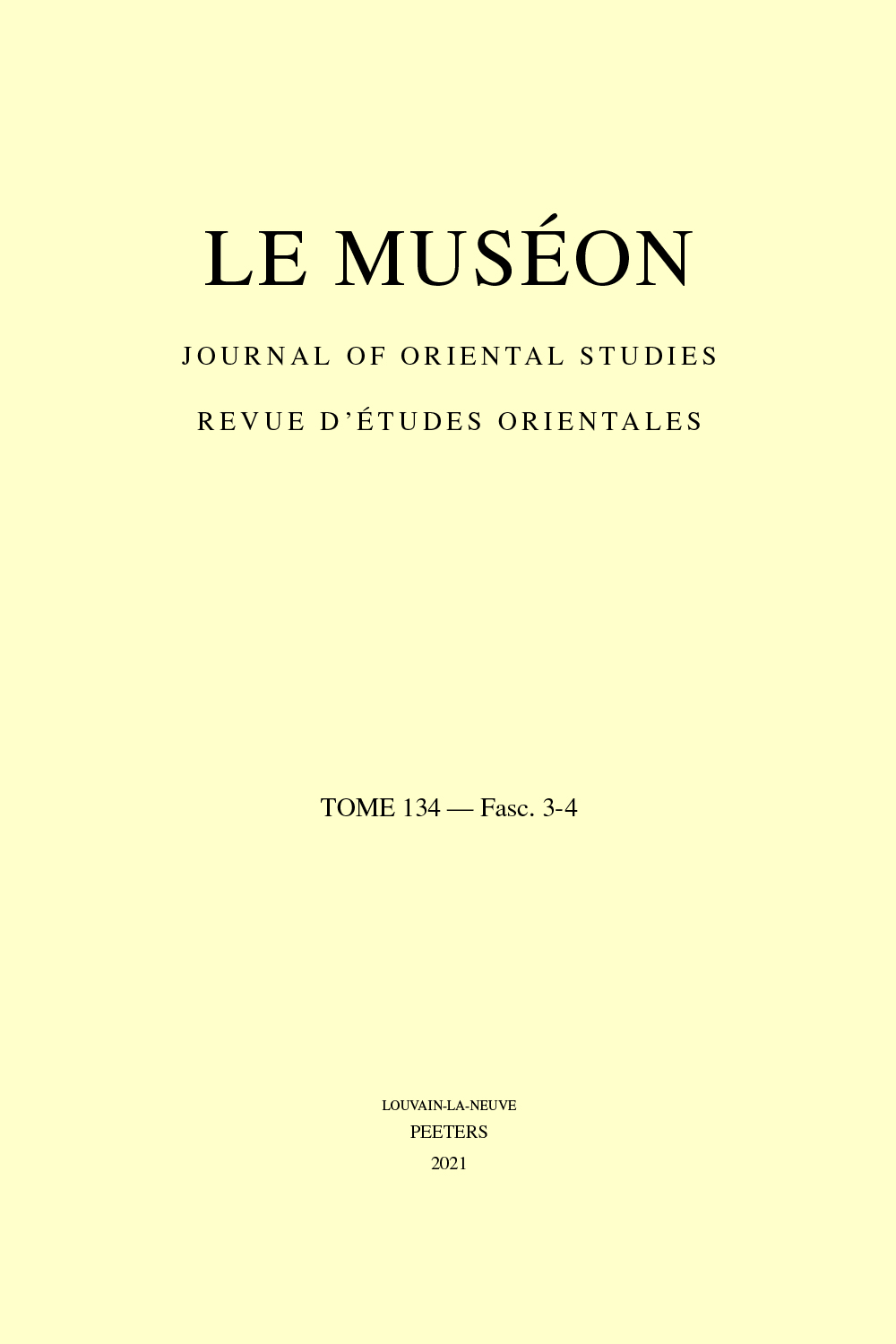 previous article in this issue previous article in this issue | next article in this issue  |

Preview first page |
Document Details : Title: The Egyptian Sanctus and the Apse Iconography of the Red Monastery Church Subtitle: The Early Use of the Sanctus in the Shenoutean Federation Author(s): CHASE, Nathan P. Journal: Le Muséon Volume: 136 Issue: 3-4 Date: 2023 Pages: 339-403 DOI: 10.2143/MUS.136.3.3292528 Abstract : Scholars have traditionally believed that the Egyptian Sanctus, as epitomized by the anaphora of St. Mark, was primarily shaped by Origen’s exegesis of Isa 6. However, recent work by Mary Farag has pointed to the possible early influence of merkavah mysticism on fourth/fifth century Egyptian texts like the anaphoras of St. Thomas (THS) and the anaphora contained in the Barcelona Papyrus (BARC). This influence can especially be seen in the unique throne or chariot imagery used in the Pre-Sanctus of these texts. THS is preserved in the Great Euchologion of the White Monastery, part of the Shenoutean Federation. While not preserved in the Great Euchologion, BARC is thought to have circulated in monastic centers in Upper Egypt as well. Adding further support to the possible merkavah underpinnings of these texts is the second phase apse iconography from the Red Monastery, dated to 500-550 CE. The iconography depicts Christ enthroned, surrounded by the many-eyed wings of the four living creatures and on the wheeled chariot of Ezek 1. This evidence, alongside the writings of Shenoute, may further bolster claims that merkavah mysticism exerted a significant influence on the Egyptian Sanctus, particularly in Upper Egyptian monastic centers like the Shenoutean Federation, in the fourth through sixth centuries. |
|


